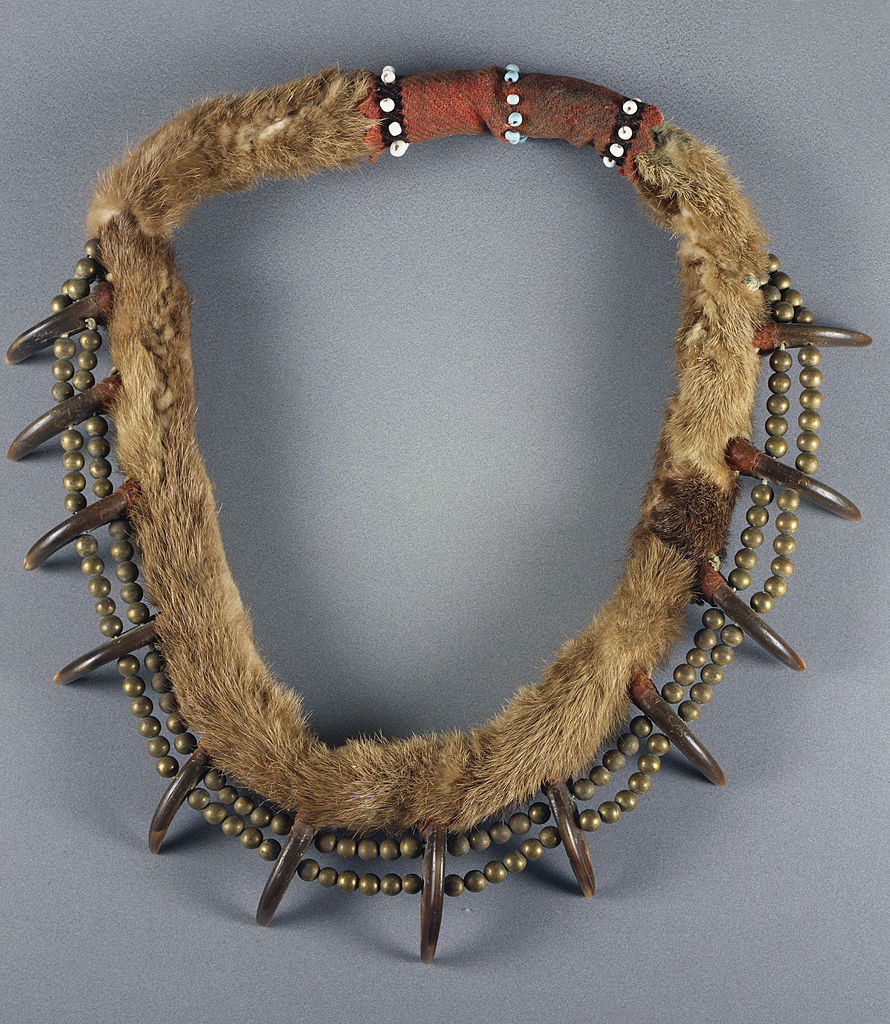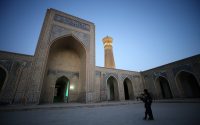Frank Stella Dies, Dozens Arrested at Pro-Palestine Encampment at Chicago’s Art Institute, and More: Morning Links for May 6, 2024
To receive Morning Links in your inbox every weekday, sign up for our Breakfast with ARTnews newsletter.
The Headlines
IN MEMORIAM. Artist Frank Stella has died at 87. During the 1950s, the iconic American artist marked paved the way for Minimalism, and brought “abstraction into brave new directions, defining an era with his ‘Black Paintings,’” reports ARTnews Senior Editor Alex Greenberger. Rejecting attempts to interpret his spare, challenging work, he famously told sculptor Donald Judd, “what you see is what you see.” Stella also said that any mystery to his subversive artwork was born of “technical, spatial and painterly ambiguities.” After working in a minimal mode, the artist then “turned maximal, enlisting eye-popping combinations of colors arrayed in dazzling patterns,” Greenberger writes. Following his first show at Leo Castelli Gallery, Stella became what the critic Peter Schjeldahl once called “a god of the sixties art world, exalting tastes for reductive form, daunting scale, and florid artificial color.”
PRO-PALESTINE PROTESTS CONTINUED this weekend in both New York and Chicago. At the Art Institute of Chicago, a group of students from the School of the Art Institute of Chicago set up an encampment to demonstrate for their cause. ARTnews reports that hours after the encampment appeared, the school asked protestors to move the action to an alternate location, and when they refused, police detained some 68 people. Meanwhile, at New York’s Whitney Museum on Friday evening, activists staged a protest and performance, accusing the institution of being “complicit in genocide” through its ties to sponsor Hyundai Motors and museum board member Nancy Carrington Crown, whose family is a shareholder in defense company General Dynamics, Hyperallergic reports. Participants projected footage of Gaza over video works on view in the current Whitney Biennial, played sound recordings of bombings, unfurled banners, and distributed pamphlets before being forced to leave.
The Digest
The king of the Asante people in Ghana, Otumfuo Osei Tutu II, hopes British law will soon change, to avoid returning recently loaned, golden Asante “crown jewels,” Looted by British troops in the 19th century, the artifacts were loaned to Kumasi’s Manhyia Palace Museum by London institutions, and are on view under a three-year, possibly renewable agreement. [The Telegraph]
The Manhattan District Attorney’s office has repatriated to Egypt stolen artifacts valued at some $1.4 million that it recovered from a global trafficking network. That network allegedly involved former Louvre director Jean-Luc Martinez, and was allegedly centered around the dealer Serop Simonian, who was arrested last year in Germany and transferred to France. [The Art Newspaper]
An Alfred Sisley “orphan” painting will be restituted to the heirs of formerly Paris-based Jewish art dealer, Grégoire Schusterman, who lost the painting when he fled Nazi persecution. Thousands of so-called “orphan” artworks were returned to France following their removal from the country by the Nazi operatives. [France Bleu]
The Taipei Dangdai fair is getting ready to host its fifth edition, with 78 participating galleries from 19 countries this May. There are plans to reach a growing, new generation of collectors who are “altering the flavor of the ecology of Taipei,” once a major art hub for Asia, according to Robin Peckham, co-director of the fair. [South China Morning Post and The Korea Times]
Airbnb is offering a night’s stay at the Musée d’Orsay in Paris, just in time for the summer Olympic Games. Olympic torch designer Mathieu Lehanneur has outfitted the former railway station’s clock room to host the museum’s special guests in a space that looks out at the Seine River, where the games’ opening ceremony will take place. [CNews]
A yellow legal pad with the pen-scrawled words “Buy Bitcoin” just sold at auction for $1 million to a buyer who goes by Squirrekkywrath. The doodle became famous among crypto-junkies when its maker held it up on live television in 2017 behind Federal Reserve Chair Janet Yellen as she spoke on C-SPAN. [Artnet News]
Two members of the group Riposte Alimentaire threw orange-colored powder onto the floor of the Hall of Mirrors at the Chateau de Versailles on Saturday. As they spoke to visitors and before they were arrested, the duo called for others to “join in civil disobedience,” and referenced the French Revolution by decrying the “indecency” of a powerful and rich minority, “while people are starving. 350 years later, nothing has changed.” [Le Parisien]
The Met Gala opens tonight around the theme “Sleeping Beauties: Reawakening Fashion” and a dress code dubbed “The Garden of Time.” While the benefit for the Costume Institute draws curious onlookers for its over-the-top fashion, brands are hoping the platform offers a “return on their investment,” says Robert Burke, chairman and chief executive officer of the consultancy firm, Robert Burke Associates, speaking to WWD. [WWD]
The Kicker
BAUHAUS REEXAMINED. A trio of German exhibitions organized by the Klassik Stiftung Weimar from May 9 to September 15 take a challenging, nuanced look at the role of Bauhaus designers during World War II, complicating a long-held narrative that the celebrated school represented unified, heroic opposition to Nazism. The Guardian’sCharles Darwent writes that while several Bauhaus students died in Nazi camps and ghettoes, others supported Hitler’s Final Solution. The Austrian Bauhaus designer, Fritz Ertl, for instance, became a Nazi party member and SS officer, even designing “swimming baths” for Auschwitz, which were in fact crematoriums where some of his fellow Bauhaus classmates burned. (He later said he did not know for what the “baths” had been intended for.) The most known victims among them was Otti Berger, a partly deaf Jewish communist, who, with Anni Albers and Gunta Stölzl, “had revolutionized weaving, turning it from a craft into an art,” writes Darwent. She and Ertle were at the Dessau iteration of the Bauhaus school, whose students numbered about 200. “It’s likely that Berger and Ertl would have known each other, at least by sight,” he adds. Berger was deported to Auschwitz from Yugoslavia in 1944.



